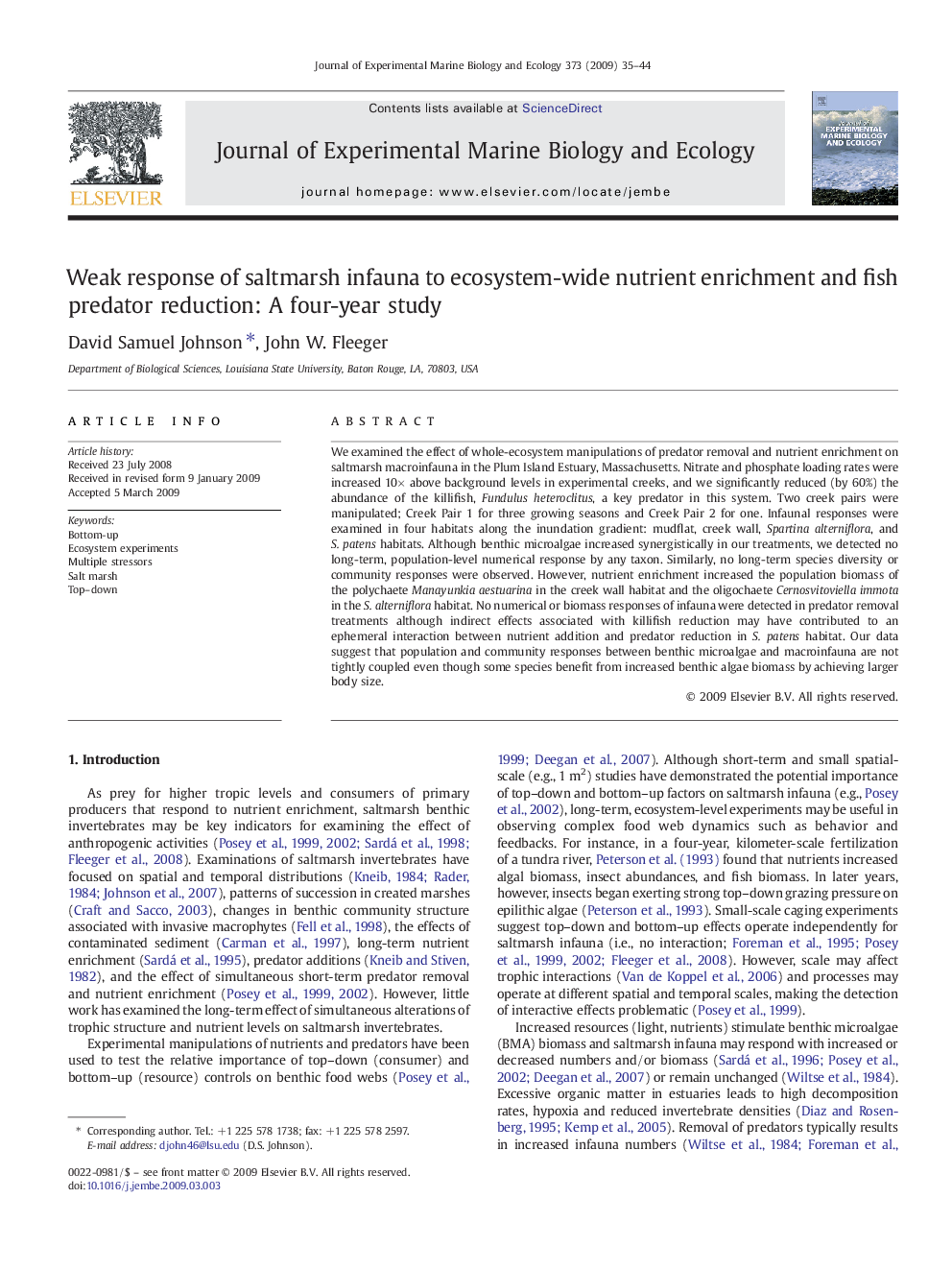| کد مقاله | کد نشریه | سال انتشار | مقاله انگلیسی | نسخه تمام متن |
|---|---|---|---|---|
| 4396890 | 1305850 | 2009 | 10 صفحه PDF | دانلود رایگان |

We examined the effect of whole-ecosystem manipulations of predator removal and nutrient enrichment on saltmarsh macroinfauna in the Plum Island Estuary, Massachusetts. Nitrate and phosphate loading rates were increased 10× above background levels in experimental creeks, and we significantly reduced (by 60%) the abundance of the killifish, Fundulus heteroclitus, a key predator in this system. Two creek pairs were manipulated; Creek Pair 1 for three growing seasons and Creek Pair 2 for one. Infaunal responses were examined in four habitats along the inundation gradient: mudflat, creek wall, Spartina alterniflora, and S. patens habitats. Although benthic microalgae increased synergistically in our treatments, we detected no long-term, population-level numerical response by any taxon. Similarly, no long-term species diversity or community responses were observed. However, nutrient enrichment increased the population biomass of the polychaete Manayunkia aestuarina in the creek wall habitat and the oligochaete Cernosvitoviella immota in the S. alterniflora habitat. No numerical or biomass responses of infauna were detected in predator removal treatments although indirect effects associated with killifish reduction may have contributed to an ephemeral interaction between nutrient addition and predator reduction in S. patens habitat. Our data suggest that population and community responses between benthic microalgae and macroinfauna are not tightly coupled even though some species benefit from increased benthic algae biomass by achieving larger body size.
Journal: Journal of Experimental Marine Biology and Ecology - Volume 373, Issue 1, 15 May 2009, Pages 35–44